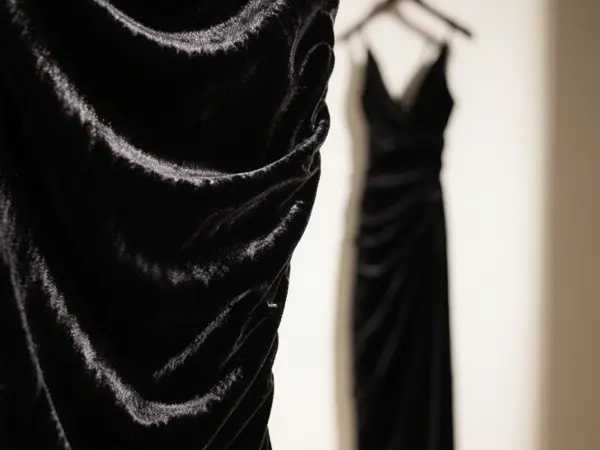Physical Address
304 North Cardinal St.
Dorchester Center, MA 02124
Physical Address
304 North Cardinal St.
Dorchester Center, MA 02124

In the vast world of textiles, velvet fabric stands out with its unique charm and a blend of remarkable advantages and certain drawbacks. Let’s take a deep dive into what makes velvet fabric both a beloved choice and one with some considerations.
The Enchanting Advantages of Velvet Fabric
Luxurious Texture and Comfort
One of the most captivating features of velvet fabric is its plump fluff. The fine texture offers a sensation that is incredibly soft to the touch, making any garment crafted from it an absolute joy to wear. Whether it’s a cozy velvet dress for a special occasion or a plush velvet throw for your living room, the comfort it provides is unparalleled. Its elegance adds a touch of sophistication, making it a go-to choice for those seeking a luxurious look and feel.
Moreover, velvet fabric boasts excellent elasticity. This means that clothes made from it can conform to your body’s contours without losing their shape. It also has the advantage of being resistant to hair loss and pilling, ensuring that your items maintain their pristine appearance over time. Another impressive quality is its superior water absorption. In fact, velvet fabric can absorb moisture three times more effectively than cotton products. This makes it ideal for items like bathrobes, where quick drying and comfort are essential. Additionally, its gentle nature ensures that it causes no irritation to the skin, making it suitable for people with sensitive skin.
Durability and Aesthetic Appeal
The fluff or loops of velvet fabric stand tightly, giving it an elegant and lightweight appearance. Beyond its good looks, the fabric is remarkably firm and abrasion-resistant. This durability makes it suitable for a wide range of applications, from upholstery to high – end fashion. It’s not easy to fade, so your favorite velvet items will retain their vibrant colors for a long time. The good rebound elasticity also means that any creases or folds will quickly disappear, keeping the fabric looking smooth and presentable.
High – Quality Material Requirement
Velvet fabric products demand high – grade, high – quality cotton. The ideal cotton for velvet has specific characteristics such as small grades, low linear density, long length, and good maturity. This focus on quality materials contributes to the overall superior feel and performance of the velvet fabric, setting it apart from many other textiles.
The Considerations of Velvet Fabric
Care and Maintenance Challenges
Despite its many allures, velvet fabric does come with some care requirements. Inadvertently stacking velvet clothing can easily disrupt the natural direction of the fluff. Once damaged, it can be quite difficult to restore the fabric to its original state. Additionally, velvet fabric is prone to static electricity. This can cause the fabric to cling to your body or attract dust and lint, which may affect its appearance.
Pilling and Linting Issues
Due to the nature of velvet fabric, with its surface composed of dense small piles, some small pile particles are bound to remain on the clothes during the production and processing. This is an inevitable aspect. Generally, these particles will be washed out in the first few washings. However, for dark – colored clothes such as black, royal blue, and carbon gray, this linting issue is more noticeable. While it doesn’t affect the quality of the fabric in the long run, it can be a bit of a nuisance, especially when you want to make a perfect impression.
In conclusion, velvet fabric is a textile with a rich array of advantages that make it a favorite for creating luxurious and comfortable items. However, it’s important to be aware of its limitations and take proper care to ensure that your velvet pieces continue to look and feel their best. Whether you’re considering adding a velvet garment to your wardrobe or using it for home decor, understanding these aspects will help you make the most of this enchanting fabric.